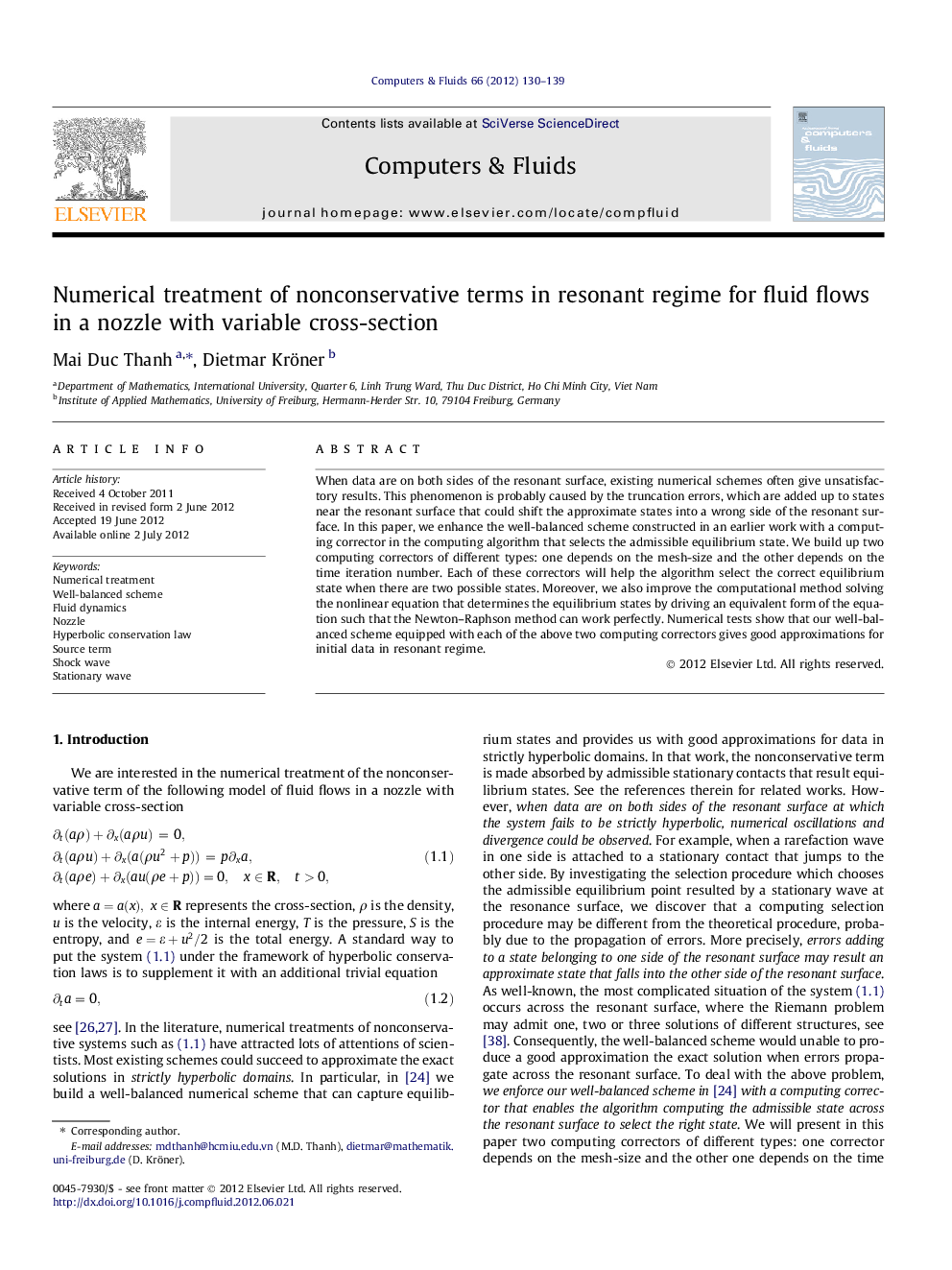| Article ID | Journal | Published Year | Pages | File Type |
|---|---|---|---|---|
| 762138 | Computers & Fluids | 2012 | 10 Pages |
When data are on both sides of the resonant surface, existing numerical schemes often give unsatisfactory results. This phenomenon is probably caused by the truncation errors, which are added up to states near the resonant surface that could shift the approximate states into a wrong side of the resonant surface. In this paper, we enhance the well-balanced scheme constructed in an earlier work with a computing corrector in the computing algorithm that selects the admissible equilibrium state. We build up two computing correctors of different types: one depends on the mesh-size and the other depends on the time iteration number. Each of these correctors will help the algorithm select the correct equilibrium state when there are two possible states. Moreover, we also improve the computational method solving the nonlinear equation that determines the equilibrium states by driving an equivalent form of the equation such that the Newton–Raphson method can work perfectly. Numerical tests show that our well-balanced scheme equipped with each of the above two computing correctors gives good approximations for initial data in resonant regime.
► The well-balanced numerical scheme is enhanced to treat resonant regime. ► The computing algorithm is equipped with a computing corrector. ► Stationary waves are computed in a convenient way using Newton–Raphson method. ► Tests show the convergence of approximate solutions in resonant regime.
